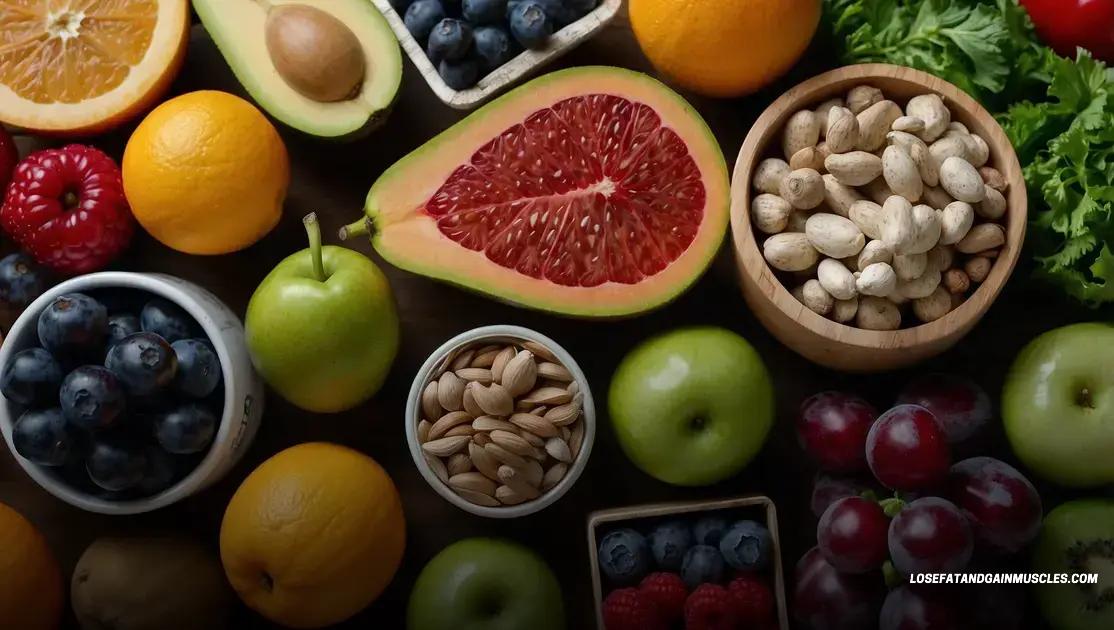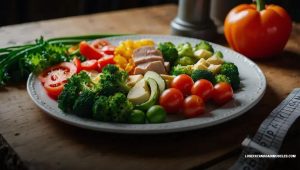Can You Lose Fat While Bulking? Discover the Truth Behind Bodybuilding Myths
Yes, you can lose fat while bulking by focusing on nutrient-dense foods, engaging in strength training, and incorporating cardio workouts. Monitoring your progress and adjusting your caloric intake are also essential to achieve effective muscle gain without significant fat accumulation.
When it comes to bodybuilding, many ask, Can you lose fat while bulking? This question intrigues both beginners and seasoned athletes alike. Bulking typically refers to a phase where individuals strive to gain weight and muscle mass, but what if fat loss could happen simultaneously? In this article, we will dive deep into the science behind bulking, effective nutritional strategies, and exercise routines that might allow you to achieve both goals at once. Let’s explore how to navigate your fitness journey while addressing this common dilemma.
Understanding the Bulk and Cut Cycle
Understanding the bulk and cut cycle is essential for any bodybuilder or fitness enthusiast. The cycle is divided into two main phases: bulking and cutting. During the bulking phase, the primary goal is to gain muscle mass. This involves consuming more calories than your body burns, allowing for positive energy balance. This excess energy is essential for muscle growth, but it can also lead to fat gain if not managed carefully.
What is Bulking?
Bulking focuses on eating nutrient-dense foods, lifting heavy weights, and optimizing workouts to maximize muscle gains. This phase can vary in length, depending on individual goals and body composition.
What is Cutting?
The cutting phase is the opposite of bulking. Here, the emphasis shifts to losing fat while retaining as much muscle as possible. This phase often requires a calorie deficit, meaning you consume fewer calories than your body needs. During cutting, bodybuilders typically increase their protein intake to help preserve muscle mass while reducing overall calorie consumption.
Why Cycle?
Cycling between bulking and cutting allows bodybuilders to gain muscle while minimizing fat gain, followed by periods of fat loss to achieve a more defined physique. Properly implementing this cycle can lead to significant improvements in body composition.
Balancing the Two Phases
To successfully navigate the bulk and cut cycle, it’s crucial to balance the two phases. A well-planned diet and exercise regimen can help ensure that gains made during bulking are retained during cutting. This is where careful monitoring of your progress becomes essential.
Throughout both phases, maintaining consistent workouts and adjusting calorie intake based on progress is key. Regularly evaluating your body composition will help in making informed decisions on when to transition between phases.
How Bulking Affects Fat Loss

Understanding how bulking affects fat loss is crucial for those looking to build muscle while maintaining a lean physique. When you bulk, the goal is to consume more calories than you burn to facilitate muscle growth. However, this process can also lead to an increase in body fat if not managed correctly.
Caloric Surplus and Its Implications
During a bulking phase, you create a caloric surplus by eating more. This excess energy supports muscle repair and growth after intense workouts. But if your diet contains too many unhealthy calories, the result can be unwanted fat gain. Therefore, it’s essential to choose nutrient-dense foods.
The Role of Macronutrients
Not all calories are equal. Pay attention to your macronutrient ratios. A diet high in protein can help mitigate fat gain by promoting muscle synthesis. However, incorporate healthy fats and carbohydrates to fuel your workouts and recovery effectively. Adjusting your food choices can make a significant difference in your overall composition, so prioritize whole foods.
Impact of Strength Training
Part of understanding bulking is recognizing how strength training impacts fat loss. Lifting weights not only aids in muscle gain but can also help in fat loss during a caloric surplus. A rigorous workout regimen ensures a substantial part of the caloric intake contributes to building muscle rather than fat.
Monitoring Your Body Composition
To achieve fat loss while bulking, monitor your body composition regularly. Keeping track of your weight, body fat percentage, and muscle mass will help evaluate your progress. If you notice excess fat gain, you may need to modify your diet or adjust your workout intensity.
By understanding how bulking affects fat loss, athletes can make informed choices about their diet and exercise strategies. This approach helps to optimize muscle gain while minimizing fat increases, leading to better results in the long run.
Can You Gain Muscle and Lose Fat?
The question of can you gain muscle and lose fat? is often debated among fitness enthusiasts. The truth is that it is possible, but it requires careful planning and execution. Here are some strategies to help achieve this goal.
Understanding Body Composition
Your body composition refers to the proportion of fat to muscle in your body. When training, your aim should be to increase muscle mass while reducing fat. This outcome can be achieved through a combination of exercise and nutrition.
Caloric Balance
To gain muscle, you typically need to be in a caloric surplus; however, to lose fat, a caloric deficit is necessary. The key lies in finding a balance that allows for slight weight gain or loss while promoting muscle growth. This can often be achieved by cycling calories or adjusting your macronutrient ratios.
The Role of Protein
Protein is vital for muscle repair and growth. A high-protein diet can help you maintain muscle mass while losing fat. Aim for a daily protein intake that’s suitable for your body weight and activity level. Consuming protein-rich foods throughout the day will also support muscle synthesis.
Training Intensity
Engaging in both cardio and strength training is essential. Strength training helps build muscle, while cardio aids in fat loss. Focus on high-intensity workouts to maximize results during both bulking and cutting phases. Include compound movements that engage multiple muscle groups to optimize your workout.
Consistency Is Key
Tracking your fitness journey is essential. Keeping a journal of your workouts and meals can help you stay accountable. Regularly assess your progress and make adjustments to your training or diet as needed. Consistent effort over time is crucial for achieving the balance of gaining muscle and losing fat.
In summary, while gaining muscle and losing fat simultaneously is challenging, it is achievable. By focusing on a balanced diet, structured workouts, and regular progress checks, you can work towards your fitness goals effectively.
Nutrition Tips for Fat Loss While Bulking

Nutrition plays a crucial role in achieving fat loss while bulking. Here are some practical tips to help you manage your diet effectively during this phase.
Focus on Quality Calories
While bulking, it’s easy to consume empty calories from unhealthy sources. Instead, prioritize whole, nutrient-dense foods such as lean proteins, complex carbohydrates, and healthy fats. Foods like chicken, quinoa, avocados, and vegetables should form the basis of your meals.
Plan Your Meals
Meal planning helps ensure you meet your nutritional goals. Prepare meals in advance and control portions to avoid overeating. Incorporating snacks like nuts or Greek yogurt can also help bridge calorie gaps without compromising your diet.
Prioritize Protein Intake
Aim for a high-protein diet to support muscle growth during bulking. Include protein-rich foods in every meal, such as eggs, fish, and legumes. A good benchmark is to aim for about 1.2 to 2.2 grams of protein per kilogram of body weight.
Monitor Your Macros
Tracking your macronutrient intake—carbohydrates, fats, and proteins—will help you maintain a balanced diet. Use a food diary or an app to log what you eat daily. This practice ensures you stay within your caloric goals and make adjustments when necessary.
Stay Hydrated
Hydration is often overlooked but is vital for overall health and performance. Drink plenty of water to keep your body functioning optimally. Proper hydration aids in digestion, muscle recovery, and reduces feelings of hunger.
Consider Supplements
If you’re struggling to meet your nutritional needs through food alone, consider using supplements like protein powders. These can help bridge the gap and make it easier to achieve your daily protein targets without excessive calorie intake.
By applying these nutrition tips for fat loss while bulking, you can effectively manage your diet and reach your fitness goals.
Exercise Strategies for Effective Bulking
Implementing effective exercise strategies for bulking is vital in optimizing muscle gain while minimizing fat gain. Here are some key strategies to consider.
Prioritize Compound Movements
Focus on compound exercises that work for multiple muscle groups at once. Movements like squats, deadlifts, bench presses, and rows are ideal because they allow for heavier weights to be lifted, stimulating muscle growth. Aim to incorporate these exercises into your routine at least three times a week.
Follow a Progressive Overload Plan
Progressive overload is essential for continual muscle growth. This means gradually increasing the weight you lift, the number of repetitions, or the number of sets over time. Keeping track of your workouts will help you stay on top of your gains and push your limits.
Incorporate Variety in Your Routine
While consistency is important, varying your routine can help prevent plateaus. Change your exercises, rep ranges, and the order of workouts every few weeks to challenge your body in new ways and keep your muscles engaged.
Allow for Adequate Recovery
Rest is just as crucial as training. Ensure you’re providing your muscles with enough recovery time between workouts. Aim for at least 48 hours of rest for the same muscle group before training it again. Getting enough sleep is also vital as it affects recovery and muscle building.
Stay Active During Off Days
Even on days when you’re not lifting weights, remain active. Light activities like walking, stretching, or yoga improve blood flow and aid recovery. This will help keep your body engaged without putting extra strain on it.
Track Your Progress
Monitoring your gains is essential. Keep a log of your workouts, nutrition, and body measurements. Tracking progress helps you see what is working and what needs adjustment. It also keeps you motivated to stick to your bulking goals.
By employing these exercise strategies, you can optimize your bulking phase and work towards achieving effective muscle gain while managing fat levels.
Monitoring Progress Effectively

Monitoring progress effectively is crucial in determining your success during the bulking phase. Here are some strategies to help you track your improvements.
Keep a Workout Log
Write down your lifts, sets, and reps for each workout. This log allows you to see how your strength is improving over time. It helps to establish a clear record of your performance and sets the stage for progressive overload.
Track Body Measurements
Take regular measurements of your body, including your waist, hips, chest, arms, and legs. Use a tape measure to get accurate data. This will help you assess changes in body composition even if the scale doesn’t reflect weight loss or gain.
Take Progress Photos
Photos provide a visual representation of your transformation. Take pictures from multiple angles in consistent lighting every few weeks. This method allows you to notice changes that might be subtle on the scale.
Monitor Your Nutrition
Keep a food diary to track your caloric and macronutrient intake. This practice ensures you stay on target with your meals. Consider using apps that make logging food easier and provide insights into nutrient balance.
Regularly Assess Body Fat Percentage
Use body fat calipers or smart scales that estimate body fat percentages. Monitoring this will help identify if your bulk is mainly muscle or if unwanted fat is being gained. Adjust your diet and training as needed based on this data.
Set Short-Term Goals
Establish both long-term and short-term goals for motivation. Aim for weekly or monthly targets, whether it’s matching a specific lift or losing a certain amount of body fat. Achieving these smaller milestones can keep you on track and motivated.
By following these strategies for monitoring progress effectively, you can ensure that your bulking phase remains focused and productive.
In Conclusion: Can You Lose Fat While Bulking?
Understanding the dynamics between bulking and fat loss is key for anyone pursuing fitness goals. By implementing effective nutrition strategies, prioritizing exercise routines, and monitoring progress diligently, individuals can maximize muscle gains while controlling fat accumulation.
Adopting the right approach to nutrition, focusing on quality calorie intake, and maintaining consistency in training will set the foundation for success. Moreover, tracking progress through workouts, body measurements, and visual documentation can provide valuable insights into your journey.
While it may seem challenging, losing fat while bulking is certainly achievable with the right mindset and strategies. By following the principles discussed, bodybuilders and fitness enthusiasts can navigate their goals effectively and confidently.
FAQ – Frequently Asked Questions About Losing Fat While Bulking
Can you really lose fat while bulking?
Yes, it’s possible to lose fat while bulking, but it requires careful planning of your diet and exercise routine.
What should I eat to lose fat while bulking?
Focus on nutrient-dense foods, such as lean proteins, whole grains, and healthy fats, while keeping track of your caloric intake.
How much protein do I need during bulking?
Aim for about 1.2 to 2.2 grams of protein per kilogram of body weight to support muscle gain while minimizing fat gain.
Is cardio necessary while bulking?
Incorporating cardio into your routine can help maintain cardiovascular health and assist in fat loss, but it should be balanced with strength training.
How can I track my progress effectively?
Keep a detailed workout log, take body measurements, monitor body fat percentage, and use progress photos to evaluate your results.
What are compound exercises and why are they important?
Compound exercises work multiple muscle groups at once, allowing for greater strength gains, making them essential for effective bulking.













